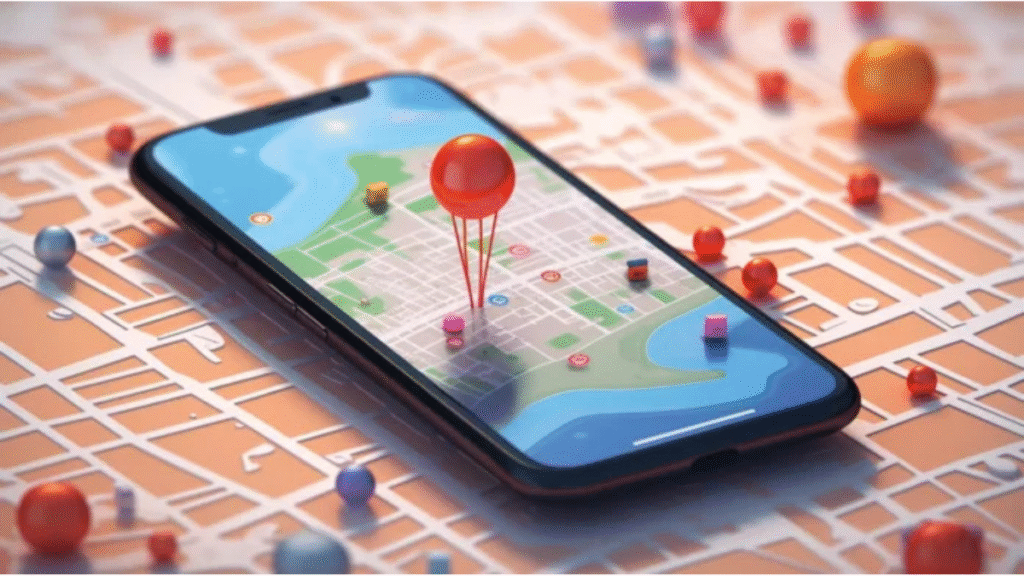In the ever-evolving digital age, mobile phones have become an extension of ourselves. As a result, businesses are rapidly shifting their focus toward mobile marketing to capture their audience’s attention anytime, anywhere. Whether you’re a digital marketer, a startup owner, or a budding entrepreneur, understanding mobile marketing is crucial to staying competitive in today’s market.
This comprehensive guide breaks down the core concepts of mobile marketing, its types, tools, strategies, benefits, and how to build an effective mobile marketing campaign from scratch.
What is Mobile Marketing?
Mobile marketing refers to multi-channel digital marketing strategies aimed at reaching consumers on their smartphones, tablets, and other mobile devices through websites, email, SMS, MMS, social media, and mobile applications.
Why is Mobile Marketing Important?
- Over 6.9 billion people use smartphones globally.
- Mobile accounts for nearly 60% of web traffic.
- Consumers spend over 3 hours a day on mobile devices.
Mobile marketing allows businesses to target users with personalized content and instant communication, offering high engagement and conversion rates.
Types of Mobile Marketing
1. SMS Marketing
Text message marketing is one of the oldest and most direct forms of mobile marketing. Businesses use it for alerts, reminders, promotions, and updates.
2. Push Notifications
These are alerts sent through mobile apps even when the app isn’t open. Push notifications increase app engagement and retention.
3. In-App Advertising
Advertisers pay to place banners or interactive ads within mobile apps. It’s ideal for targeting a specific niche based on app category and usage.
4. Mobile Websites
A responsive or mobile-optimized website ensures a seamless experience across different screen sizes, enhancing usability and conversion.
5. QR Codes
QR (Quick Response) codes link users directly to landing pages, websites, or promotional content via their mobile cameras.
6. Location-Based Marketing

Uses GPS and geofencing to send messages to users when they enter a specific location, like a store or event venue.
7. Mobile Search Ads
These are PPC (pay-per-click) ads that appear in search engine results on mobile devices. They often include features like click-to-call buttons.
Key Components of a Mobile Marketing Strategy
Understand Your Audience
Start by identifying who your audience is—demographics, interests, behavior, and mobile usage habits.
Set Clear Goals
Whether it’s brand awareness, lead generation, or app downloads, having defined objectives is essential for measuring success.
Optimize for Mobile
Ensure your website, emails, and content are mobile-friendly. Use responsive design, fast loading times, and clear CTAs.
Choose the Right Channels
Select the most suitable mobile channels (SMS, apps, social, email, etc.) based on your goals and where your audience spends their time.
Personalize Content
Use data and segmentation to tailor messages to specific users, increasing relevance and engagement.
Track and Analyze Metrics
Key mobile marketing metrics include CTR, conversion rate, app downloads, bounce rate, and retention rate.
Tools for Mobile Marketing
1. Google Ads
Use Google Ads to run mobile search and display campaigns with targeting options like device type and location.
2. Mailchimp
Mailchimp offers mobile-optimized email marketing with personalization and analytics features.
3. OneSignal
A popular platform for sending push notifications, especially for mobile apps.
4. Branch
Helps track deep linking and mobile attribution to understand user journeys across platforms.
5. AppsFlyer
Used for mobile attribution, performance analytics, and campaign optimization.
Building a Mobile Marketing Campaign (Step-by-Step)
Step 1: Define Your Audience
Use tools like Google Analytics, social media insights, or surveys to understand your users’ mobile behavior.
Step 2: Set Objectives
Define measurable goals such as increasing app installs by 20% in 3 months or improving mobile email open rates.
Step 3: Choose Marketing Channels
Pick the best-fit channel (SMS, app push, in-app ads, mobile search) based on your goals and audience preferences.
Step 4: Design Mobile-Friendly Content
Ensure text is readable, images are optimized, and CTAs are thumb-friendly. A/B test for continuous improvement.
Step 5: Launch and Monitor
Deploy your campaign and use real-time analytics tools to monitor performance.
Step 6: Optimize Based on Results
Refine your targeting, messaging, and timing based on what works. Always test and iterate.
Benefits of Mobile Marketing
1. High Engagement
Mobile users are highly active, making it easier to capture attention and drive action.
2. Cost-Effective
SMS, push notifications, and mobile ads can be more affordable compared to traditional media.
3. Real-Time Communication
Instantly connect with users through text, notifications, or emails with timely messages.
4. Personalization
Mobile platforms allow for hyper-targeting and personalized messaging based on user behavior.
5. Location-Based Targeting
You can deliver geo-targeted messages to drive foot traffic and enhance user experience.
Challenges in Mobile Marketing
Ad Blockers
Many users use ad blockers, reducing the visibility of mobile ads.
Privacy Regulations
GDPR, CCPA, and other data laws require compliance and ethical data usage.
Device Fragmentation
Creating content that works on all devices, OS versions, and screen sizes can be complex.
App Fatigue
With thousands of apps available, getting users to download and engage with yours can be difficult.
Mobile SEO: Optimizing for Search
Mobile-First Indexing
Google prioritizes mobile versions of websites for indexing and ranking.
Page Speed
Mobile users expect quick loading. Use tools like Google PageSpeed Insights to optimize performance.
Responsive Design
Ensure your site adjusts to various screen sizes and orientations.
Mobile-Friendly Content
Short paragraphs, readable fonts, and clickable buttons enhance mobile UX.
Social Media and Mobile Marketing
Most social media traffic is mobile-based. Platforms like Instagram, TikTok, and Snapchat are designed primarily for mobile use.
Tips:
- Use vertical videos.
- Keep captions concise.
- Use Stories and Reels for higher engagement.
- Target mobile users with geo-filters and sponsored posts.
Mobile App Marketing
If you have an app, mobile marketing is essential for discovery and engagement.
Strategies Include:
- App Store Optimization (ASO)
- Paid app install campaigns
- In-app referral programs
- Push notifications
- Loyalty rewards
Future Trends in Mobile Marketing
AI & Chatbots
Personalized conversations and instant responses will be led by AI on mobile.
Augmented Reality (AR)
AR in mobile ads and apps is transforming how users interact with products virtually.
5G Technology

Faster data means better experiences for streaming, AR/VR, and instant load times.
Voice Search
Optimizing for voice queries is crucial as smart assistants become more mobile-friendly.
Also Read: The Ultimate Guide To Content Marketing In 2025
Conclusion
Mobile marketing is no longer an option—it’s a necessity. As smartphones continue to dominate how people connect, shop, and consume content, businesses must adapt their strategies to stay competitive. With the right tools, targeted approach, and optimized content, even beginners can launch impactful mobile campaigns that drive real results. The key is to start small, measure consistently, and scale smartly.
FAQs
1. Is mobile marketing suitable for small businesses?
Absolutely! Mobile marketing is cost-effective and offers various options like SMS, social media, and local targeting perfect for small businesses.
2. What’s the difference between mobile marketing and digital marketing?
Digital marketing includes all online channels (desktop and mobile), while mobile marketing focuses specifically on mobile devices and platforms.
3. How can I make my website mobile-friendly?
Use responsive design, compress images, use legible fonts, and optimize for speed and mobile navigation.
4. Are push notifications better than SMS?
Push notifications are ideal for app users and less intrusive, while SMS is more direct and doesn’t require an app install. Both have unique advantages.
5. How do I track mobile marketing performance?
Use analytics tools like Google Analytics, AppsFlyer, or Branch to track CTR, engagement, installs, and conversions.


